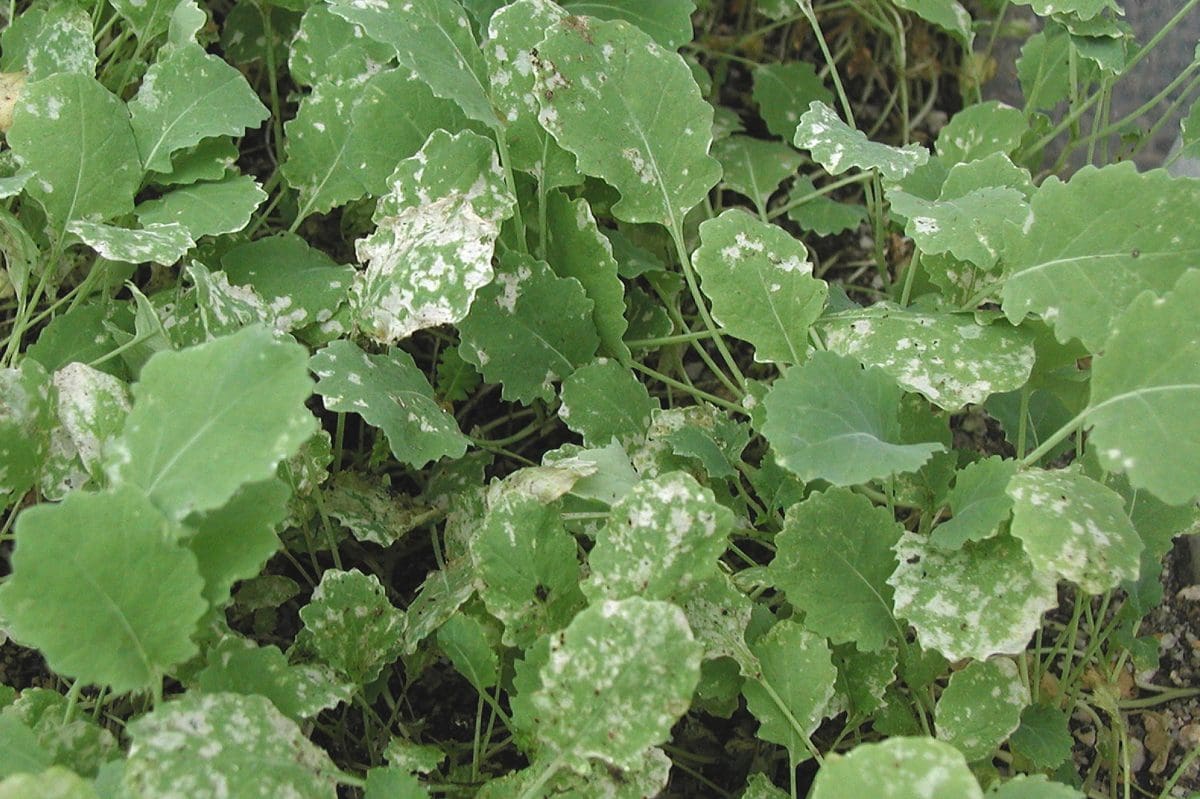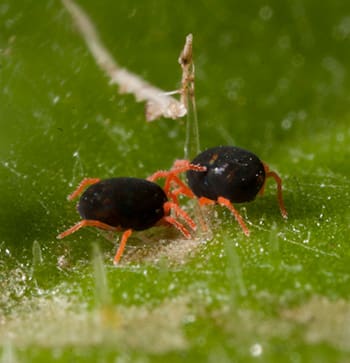
Redlegged earth mite feeding damage. Photo: Cesar Australia
RESEARCH organisation Cesar Australia is urging grain growers and farm advisors to come forward if they find a chemical control failure or suspect insecticide resistance in redlegged earth mites (RLEM).
A common and widespread pest species, RLEM can be found in a broad range of crops including canola, wheat, barley, oats and most pulses as well as pasture legumes and grasses.
While RLEM is less of a concern for cereal crops and some pulses, damage can occur under certain conditions and weeds can also act as alternative hosts.
If not adequately controlled, RLEM feeding causes white discoloration of leaves and distortion in severe infestations.
Affected seedlings can die at emergence with high mite populations.

Redlegged earth mites. Photo: GRDC
Cesar Australia director Paul Umina said a major concern facing the Australian grains industry was the heavy reliance on three registered chemical classes to control RLEM – neonicotinoids as a seed dressing, and synthetic pyrethroids (SPs) and organophosphates (OPs) as foliar insecticides.
“Insecticide resistance in RLEM to both SPs and OPs had previously only been detected in Western Australian populations, but since 2016 has been confirmed in multiple populations from South Australia and Victoria,” Associate Professor Umina said.
He said RLEM samples should be sent to Cesear for testing for insecticide resistance.
Cesar Australia is actively screening populations from South Australia, Victoria, New South Wales and Tasmania where control failures to SPs and/or OPs may be occurring.
The research team are interested in hearing from growers or advisers who have experienced recent or past chemical control failures or have paddocks that continually require control of RLEM with pesticides.
This no-cost screening service is made possible through a Grains Research and Development Corporation (GRDC) investment being led by Cesar Australia in collaboration with the University of Melbourne, the Western Australian Department of Primary Industries and Regional Development (DPIRD) and CSIRO.
“RLEM populations from paddocks which are frequently impacted by the mites, and often require spraying, are ideal candidates for resistance testing,” Associate Professor Umina said.
Cesar Australia will be undertaking field trips to collect RLEM for resistance screening, so get in touch if you would like to discuss RLEM collection from your area.
Although insecticide options were currently limited, Associate Professor Umina said it was still crucial to minimise chemical use and rotate chemical groups to reduce the spread of insecticide resistance.
He said the screening service would help detect any resistance before it became widespread and would also assist in identifying the best control options for growers.
“We encourage growers and advisers to make use of this service, and also refer to the National RLEM Resistance Management Strategy to help avoid control failures.”
For further information about the resistance testing service contact Aston Arthur, Cesar Australia on 0427 875 040 or via email.
The RLEM Resistance Management Strategy can be found on the GRDC website, as well as the IPM Guidelines for Grains website.
Source: GRDC

HAVE YOUR SAY